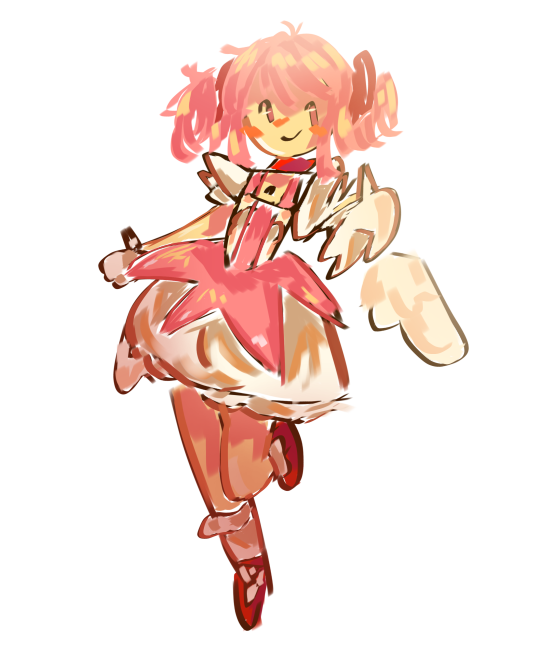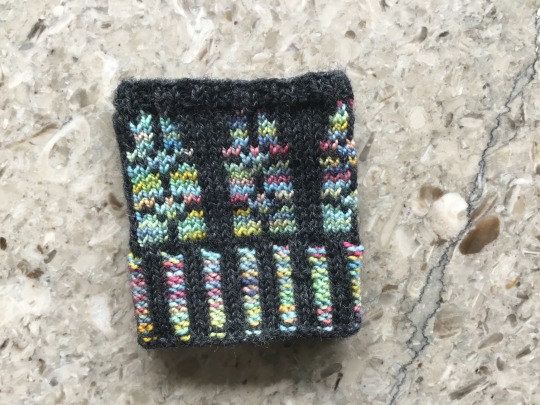#pppm
Text
madoky requested by friend

461 notes
·
View notes
Text

Practical Potions and Premeditated Murder by Wren Jones is the best cozy fall read! Sapphic slow burn, murder mystery, sassy familiar with magic and coffee. I absolutely loved this book!
7 notes
·
View notes
Text
do you think the wagyu cows and the non wagyu cows would be friends?
0 notes
Text
now entering the time of year where i spend every spare moment imagining yelling at my landlord
#£700 pppm and the fucking fridge is in the living room?!#you have one job which is to tell us when the plumber is coming and you can't even do that#and yet you decide whether im homeless or not so i have to pretend were fucking friends#eat shit Vic
0 notes
Text
Bro I just thought of the song The Sadder but Wiser Girl song from The Music Man from my youths. But as I was thinking about it, I was like “hold up….noooo” Like I never just sat down and thought about the lyrics up til now
“For no Diana do I play faun”
“I hope, and I pray, for a Hester to win just one more A”

Like yeah I knew he was preying on women (it’s like half the musical) to a certain extent but I didn’t know he just spelled it out for everyone
#anyways I’m more literate now 🥰🥰🥰#also I know pppm are like he’s a changed man by the end of it#like….reallllllly? are u suuuuure???#I wasn’t born yesterday#I think he’d ditch Marian bc he can bring himself to stay attached after a while
0 notes
Text
BBC Ghosts Animal Crossing Outfits
I gave up on Humphrey and Robin :’) maybe I’ll try again soon. Hope you enjoy these!
My creator code is MA-0173-7639-9071

The Captain coat
MO-2HY4-G59D-FT9K

Pat shirt
MO-GM16-XCRG-KY21

Thomas shirt
MO-3KWL-DMNK-4P2J

Kitty dress
MO-PGC8-3R48-5NC7

Mary Dress
MO-11TR-S9XL-LGP1

Julian shirt
MO-X7B4-0046-MLP9

Fanny dress
MO-GLS3-JPX4-PPPM
#bbc ghosts#ghosts#ghosts bbc#my interests#pat butcher#kitty ghosts#julian bbc ghosts#julian#julian fawcett#pat bbc ghosts#pat ghosts#fanny button#fanny bbc ghosts#fanny ghosts#kitty bbc ghosts#thomas thorne#thomas bbc ghosts#thomas ghosts#mary ghosts#mary bbc ghosts#the captain ghosts#the captain bbc ghosts#the captain#the six idiots#animal crossing#nintendo acnh#acnh#acnh custom design
233 notes
·
View notes
Text



As suspected the Koigu PPPM works really well for the stained glass effect that Tracery goes after. Swatch knit in the round. I’m reading notes on the pattern from other knitters and there’s a few interesting ideas like reducing the ribbing and adding a repeat or making the windows taller.


But what I actually started working on is the Maple Leaf shawl, because it would be a great gift for my mum and it looks like so much fun! I had to frog and restart a couple of times before I got the hang of it but that’s mostly because I’d forgotten you actually have to pay attention with lace 😅
6 notes
·
View notes
Text
Jak już we wcześniejszych blogach wspominałam że chodzę do technikum gastronomicznego. Szkoła nie tylko mnie uczy jak gotować i innych pierdów związanych z żywieniem w restauracjach czy innych punktach gastronomicznych, ale również zasad dietetyki.
Przez trzy lata nauki zdążyłam się zapoznać z podstawowymi pojęciami które powinnyśmy wziąć pod uwagę przy odchudzaniu.
- PPM- podstawowa przemiana materii
PPPM- ponad podstawowa przemiana materii
CPM- całkowita przemiana materii
PAL- ilość wykonanego wysiłku fizycznego w ciàgu dnia


To są wzory do PPM
Ale co to jest i czym się od siebie różnią?
PPM jest to ilość energii jaką musimy dostarczać organizmowi, który ma warunki idealne i nie wykonuje żadnych czynności. Takie nieruszające się warzywko. Nie poci się, nie mówi, nie rusza, oddycha w normalnym tempie, jego puls jest na równym poziomie, nie śpi.
Te wzory które podałam na górze tzw. Wzór Harrisa Benedicta jest bardziej dokładny jednak jest jeszcze jeden wzór, prostszy, co prawda o mniejszej dokładności.
1 x masa ciała x 24h
PPPM jest to ilość energii potrzebna organizmowi do normalnego funkcjonowania .
CPM inaczej ilość energii potrzebna do funkcjonowania z wliczeniem potrzebnej energii do wykonywania pracy, czyli z wliczeniem ilości wysiłku fizycznego w ciągu dnia.
CPM= PPPM + PAL


Na tej podstawie jesteśmy w stanie wyliczyć swoje dzienne zapotrzebowanie kaloryczne i bardziej miarodajnie układać do tego swoje diety.
Ten post wystawiam dla tych którzy zaczynają dopiero swoją drogę. By mogli sobie to wszystko policzyć i powoli stopniowo obniżać ilość spożywanych kcal. Między innymi po to by nie zniszczyć swojej przemiany materii ( zbyt szybko ) i móc krok po kroku lepiej przygotować swoje ciało do mniejszej ilości dostarczanych przez nas kalorii oraz uniknąć napadów po ledwie tygodniu po rozpoczęciu diety.
Dlatego ta wystawiona przeze mnie dieta w poprzednim poście jest dla tych którzy od jakiegoś czasu już są w odchudzaniu. Jak i przy jej układaniu sugerowałam się funkcjonowaniem mojego ciała, biorąc poprawkę na wcześniejsze potknięcia, ułożyłam taką dietę a nie inną.
Mam nadzieję że ten post wam się do czegoś przyda, jeśli chcecie więcej takich publikacji to piszcie w komentarzach, chętnie podzielę się wiedzą.
Trzymajcie się chudo kochani🦋🦋
#chce być idealna#chce być motylkiem#chce być perfekcyjna#chce być lekka#motylki any#będę motylkiem#chce być szczupła#lekka jak motyl#motywacja#wystające kości#aż do kości#skóra i kości#gruba szmata#jestem gruba#diet and weight loss#ed diet
18 notes
·
View notes
Text
Innovating A Digital Tomorrow
Malaysia leads in digital education, while global tech investments surge.
By Dr Mahathir Mohd Rais
In the dynamic digital age, nations worldwide are leveraging technology to revolutionize education and financial systems. Among these, Malaysia stands out with its strategic culmination of the Malaysia Education Development Plan (PPPM) 2013-2025 and the introduction of the forthcoming 2027 School Curriculum, emphasizing the paramount importance of digital fluency. This…

View On WordPress
0 notes
Text
Jadi Timses Capres, Ketum PP Pemuda Muhammadiyah Diminta Mundur
JAKARTA | KBA-Ketua Umum Pimpinan Pusat Pemuda Muhammadiyah (PPPM) Dzukfikar Ahmad Tawalla, diminta agar mengundurkan diri atau nonaktif dari jabatannya setelah bergabung atau masuk dalam tim sukses (timses) calon Presiden dan calon Wakil Presiden (capres-cawapres) pada pemilu 2024.
Diketahui Dzulfikar saat ini aktif menjadi tim sukses capres-cawapres nomor urut 2 Prabowo Subianto-Gibran…

View On WordPress
0 notes
Text
no but I can’t wait for when there is a gold shortage and that generation looks at the 2010s the same way we look at the Victorians and their mummy eating.
#like ‘WHY DID YOU EAT THE GOLD’??#and all we can say is it was pretty and snazzy so why not#y’know??#like I don’t think I’d ever eat it#it kind of icks me out#but the gold donuts?#the gold leaf in everything?#was such a Time#pppm#predictions
0 notes
Text
youtube
FREESTYLE ppm pmmp aha yeah apmpmp pppm p yo UH INCREDIBLE !
0 notes
Text
Ayurveda VS. Western Medicine: Comparing the Approached to Health and Healing
An Introduction To Ayurvedic Practice
Ayurveda, one of the ancient Indian systems of medicine, has recently gained immense popularity for its holistic approach to health and wellness. Ayurveda focuses on balancing the body, mind, and spirit through a combination of natural remedies, lifestyle modifications, and dietary changes.
We will delve into the world of Ayurveda and explore some of the most effective Ayurvedic practices that can help achieve optimal health and well-being. From explaining the different qualities & attributes of Ayurveda and understanding the doshas to yoga and meditation, we will cover a range of Ayurvedic practices that can help you lead a more balanced and fulfilling life. So, this benefits health practitioners, including yoga instructors, medical doctors, natural health practitioners, and anyone interested in learning about Ayurveda. Join us while we explore the world of Ayurveda, its benefits and how it incorporates into this modern world.
Ayurveda – A Holistic Approach To Mind, Body & Spirit
Ayurveda, one of the world’s most ancient medical systems, is based on the principle that health depends upon a balance between the mind, body and spirit. Ayurveda provides a holistic approach to wellness by considering our physical but also our mental, social and spiritual needs.
Ayurveda translates as “science of life” or “knowledge of life.” It originated in India over 5,000 years ago. It was developed by ancient Indian physicians who believed that health was dependent on maintaining a balance between three fundamental energies: Vata (air), Pitta (fire) and Kapha (water).
Ayurvedic practice is rooted in ancient Indian texts and teachings. The Ayurvedic tradition emphasises the importance of achieving balance and harmony in all life features, including physical, mental, and spiritual health. The concepts of Vedas, Doshas, Samhita, Pragya Aparadha, and Chitta Suddhi Yoga are also relevant to Ayurvedic practice.
Samhita relates to Ayurveda through the ancient texts and teachings that form the foundation of Ayurvedic philosophy and practice. The main text of Ayurveda, the Charaka Samhita, outlines the principles of Ayurvedic medicine and emphasises the importance of maintaining balance in the body and mind.
Pragya Aparadha is also relevant to Ayurvedic practice because it acknowledges the mind and emotions’ role in overall health. In Ayurveda, negative emotions such as fear, anger, and worry are believed to disrupt the balance of the doshas or bodily energies and can lead to physical and mental imbalances. Thus, recognising and correcting mistakes in our thoughts and behaviours is essential for optimal health.
Chitta Suddhi Yoga is also related to Ayurvedic practice because it emphasises the importance of purifying the mind and heart. Ayurvedic treatments such as meditation, pranayama, and self-reflection can help to calm the mind, reduce stress, and improve mental clarity. “Chitta” refers to the mind, and “Suddhi” means purity or cleanliness. This practice involves various techniques, including asana (yoga postures), pranayama (breathing exercises), meditation, and self-reflection.
By purifying the mind and heart, we can remove obstacles to spiritual progress and achieve inner peace and clarity. In addition, Ayurvedic dietary and lifestyle practices can also support the purification of the body and mind, which is essential for overall health and well-being.
PPPM Model of Health
The PPPM model was conceptualised in the early 2000s, with the rise of genetics and other advanced technologies that made personalised medicine achievable. In 2009, Leroy Hood, an American biologist and the founder of the Institute for Systems Biology, introduced the term “PPPM” to describe the healthcare paradigm that integrated predictive, preventive, and personalised medicine (PPPM)
While PPPM is a modern approach, it shares many similarities with the Ayurvedic traditional healthcare system, which also focuses on preventative care, personalised treatment, and holistic wellness.
While Ayurveda and the PPPM model of health have several differences, they share some common principles and objectives. Both place a strong emphasis on preventive medicine and patient engagement in healthcare. Additionally, both recognise the importance of personalised healthcare, tailoring treatments to each patient’s specific needs.
The holistic approach to health and well-being central to Ayurveda aligns with the PPPM model’s focus on holistic healthcare. Both practices recognise that health is a complete condition of physical, mental, and social well-being and not the absence of disease.
The PPPM model of health is a modern, Western approach that utilises advanced technologies to predict and prevent disease. At the same time, Ayurveda is a traditional, holistic system of medicine that emphasises individualised care and the interconnectedness of all things. Nevertheless, Ayurveda’s emphasis on personalised care, preventive healthcare, and the interconnectedness of everything aligns with the PPPM model’s objectives. Ayurvedic principles may contribute to developing personalised treatment plans by considering an individual’s unique genetic makeup (prakruti or mind-body type), lifestyle, and environment.
Takeaway
Ayurveda is a comprehensive system of medicine with a history dating back thousands of years. The PPPM model of health is a modern, Western approach that uses advanced technologies to predict an individual’s risk of developing disease and create personalised treatment plans, preventive medicine and patient engagement. Incorporating Ayurvedic principles into modern healthcare can result in more personalised and effective treatment plans tailored to the specific needs of each individual.
At Ayurveda Awareness Centre, we believe that our minds and bodies require nourishment and proper foods. So, begin enhancing your diet with Ayurveda by following our courses “Foundation Training in Clinical Ayurveda (FTCA)” and “Ayurveda Appreciation Program”, and you’ll understand the significant health benefits of certain foods.
This Foundation Training in Clinical Ayurveda (FTCA) program educates on the knowledge and skills required to look after one’s health & family’s well-being by integrating Ayurvedic practices into daily life and achieving a balance of wellness in all aspects of life. The course is a hybrid program, Online Live and self-study, with 350 learning hours + 7 two – days of the intensive session, starting from MAY 2023.
This course benefits health practitioners, including yoga instructors, medical doctors, natural health practitioners, and anyone interested in learning about Ayurveda.
Take a first step towards enhancing your skills in this field and learn Ayurvedic principles to refine your life.
To know more about our course, click here
The “Ayurveda Appreciation Program” is a beginner-level program to learn and understand the basic fundamental concepts of Ayurveda. It is suitable for other health practitioners, including yoga instructors, medical doctors, natural health practitioners, and naturopathy students. The course lasts about 30 hours, with 9-10 weeks, an Online Live Program.
0 notes
Text
Multi-omics and immune cells' profiling of COVID-19 patients for ICU admission prediction: in silico analysis and an integrated machine learning-based approach in the framework of Predictive, Preventive, and Personalized Medicine
CONCLUSION: The nomogram and monocytes could provide added value to ICUA prediction and targeted prevention, which are cost-effective platform for personalized medicine of COVID-19 patients. The log(2)fold change (log(2)FC) of the fraction of monocytes could be monitored simply and economically in primary care, and the nomogram offered an accurate prediction for secondary care in the framework of PPPM. http://dlvr.it/SkB5d5
0 notes